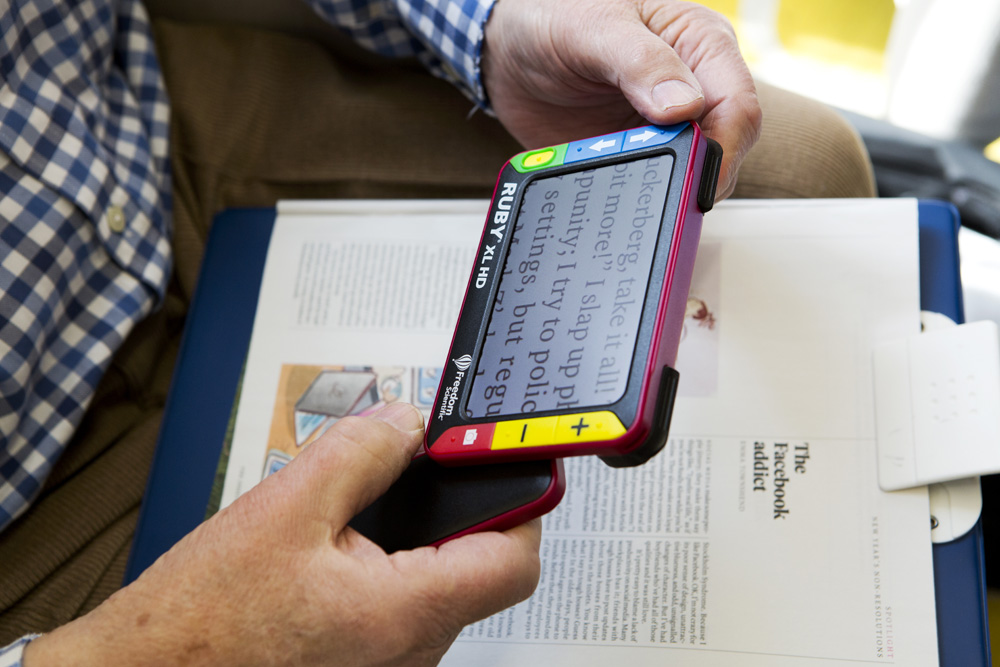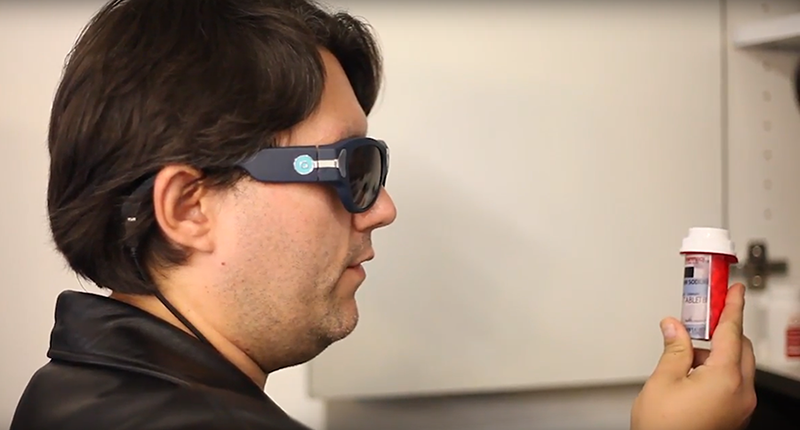Empowering Self-reliance With Assistive Modern Technology for the Blind
The integration of assistive technology into the lives of people with aesthetic problems stands for a significant development in advertising self-reliance and self-sufficiency. From cutting-edge display viewers to sophisticated smart walking sticks, these tools not just improve day-to-day navigating and interaction yet additionally encourage users to engage meaningfully in various aspects of life. As we explore the myriad benefits and real-world applications of these technologies, it becomes important to take a look at the hidden aspects that add to their efficiency and the capacity for future advancements in this important field.
Summary of Assistive Technology

The growth of assistive modern technology is based in concepts of inclusivity and empowerment. Technologies in software program, equipment, and sensory improvements give users with choices tailored to their particular needs. From screen viewers that transform message to speech, to responsive gadgets that communicate information through touch, these devices change the means people engage with their environments.
In addition to functional applications, assistive technology cultivates better social incorporation and engagement in various sectors, consisting of education and employment (Voice-activated assistive devices). As r & d remain to progress, the possibility for assistive innovation to further boost the lives of visually damaged people remains encouraging, leading the way for an extra equitable culture where everyone can grow
Sorts Of Assistive Instruments
A range of assistive tools have arised to support individuals with visual problems, each designed to meet specific demands and improve day-to-day functioning. These tools range from low-tech remedies to modern innovations, supplying varied options for customers.
Low-tech devices include magnifiers and large-print products that assist in reading and writing. Braille devices, such as Braille slates and styluses, make it possible for responsive reading and communication. Alignment and movement aids, like white walking canes, help individuals browse their setting safely.
On the higher end of the spectrum, digital magnifying systems and screen readers use significant assistance. Digital magnifiers permit users to expand message and photos on displays, while screen readers transform electronic web content right into synthesized speech, assisting in accessibility to details on computer systems and smartphones.
Mobile phone applications likewise play a critical duty, providing features like text recognition and navigation assistance. Wearable technology, such as smart glasses geared up with enhanced truth, is emerging as an appealing tool to enhance situational awareness.
Benefits of Assistive Technology
The integration of assistive technology significantly improves the high quality of life for people with visual disabilities. These innovations empower users by promoting freedom, allowing them to browse their atmospheres better and perform daily jobs with higher simplicity. For example, screen viewers and magnification software permit people to access digital details, promoting specialist and academic opportunities that might have previously been out of reach.
Additionally, assistive devices such as wise canes and general practitioners applications offer real-time navigating support, boosting movement and safety and security. This boosted autonomy not only boosts self-confidence yet likewise urges social involvement, allowing individuals to participate even more totally in their neighborhoods.
Assistive modern technology also assists in communication, assisting customers get in touch Screen readers for the blind with others via voice recognition and text-to-speech applications. This ability is essential for preserving partnerships and accessing crucial info.
Furthermore, the modification choices offered with many assistive technologies ensure that individuals can tailor gadgets to their details needs, even more improving use and effectiveness. Generally, the advantages of assistive modern technology for individuals with visual disabilities are profound, advertising an extra comprehensive culture where every person can pursue their ambitions and objectives.
Study and Success Stories
Highlighting the transformative influence of assistive technology, numerous study illustrate how people with visual problems have actually effectively integrated these devices into their every day lives. One compelling example involves an university student that used screen analysis software application to browse on-line resources and scholastic materials properly. This innovation not only promoted her education yet likewise enhanced her self-confidence in taking part in conversations and group tasks.
Another instance study includes a professional that uses a mobile phone application made for navigation and things recognition. By utilizing this application, he has reclaimed freedom in both his individual and workplace, enabling him to commute individually and engage with associates a lot more effectively.
Furthermore, a retiree shared her experience with braille e-readers, which allowed her to access a huge range of literature and remain connected with her area with publication clubs.
These success tales emphasize the important duty of assistive technology in cultivating independence, boosting lifestyle, and advertising social integration for individuals with visual problems (Braille displays and notetakers). By welcoming these innovative tools, users can conquer difficulties and take possibilities that add to their specialist and individual gratification

Future Fads in Assistive Innovation
Advancement in assistive technology is positioned to redefine the landscape of assistance for individuals with visual problems. Emerging fads stress the integration of man-made knowledge (AI) and device discovering, which boost the capability of devices that help with navigating and info access. As an example, AI-driven applications are now efficient in translating aesthetic information in real-time, making it possible for users to engage with their environment much more separately.
In addition, the development of wearable modern technology is advancing rapidly. Smart glasses outfitted with increased fact (AR) can offer audio descriptions of environments, transforming how users engage with public rooms. These devices not only promote freedom but also foster social addition.
In Addition, the Internet of Things (IoT) is making homes smarter, enabling seamless connection in between assistive gadgets and everyday home appliances. This connection empowers users by making it possible for automatic feedbacks and voice-activated controls tailored to specific needs.
Verdict
To conclude, assistive technology plays a critical role in encouraging individuals with visual impairments by improving their self-reliance and involvement with their surroundings. The diverse series of gadgets and applications offered not only promotes navigation and communication but also promotes social assimilation and opportunities for individual and expert growth. As improvements continue in this area, the possibility for improving the lifestyle for those with aesthetic problems will expand, fostering greater freedom and empowerment.
